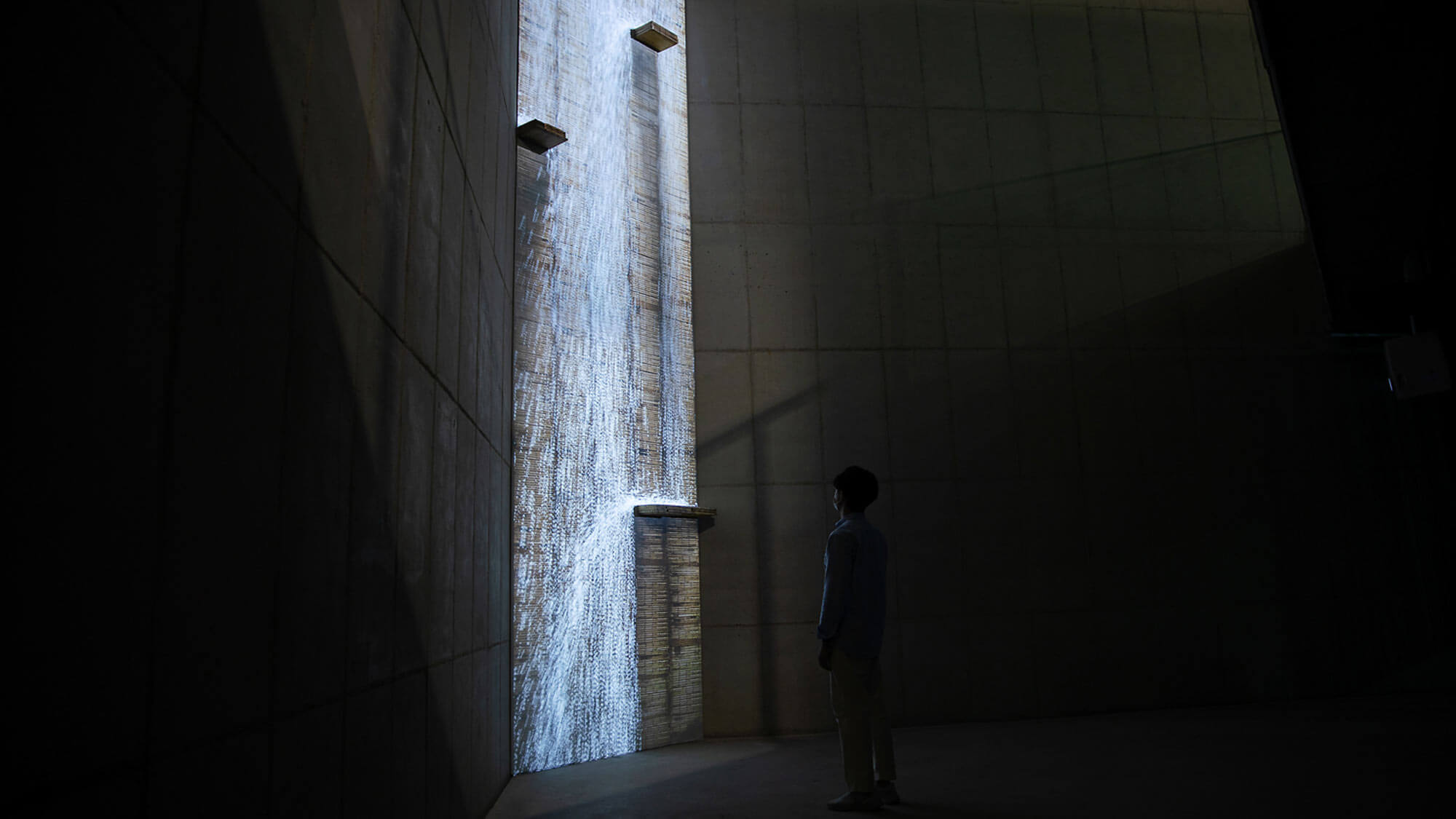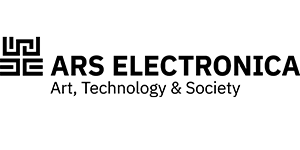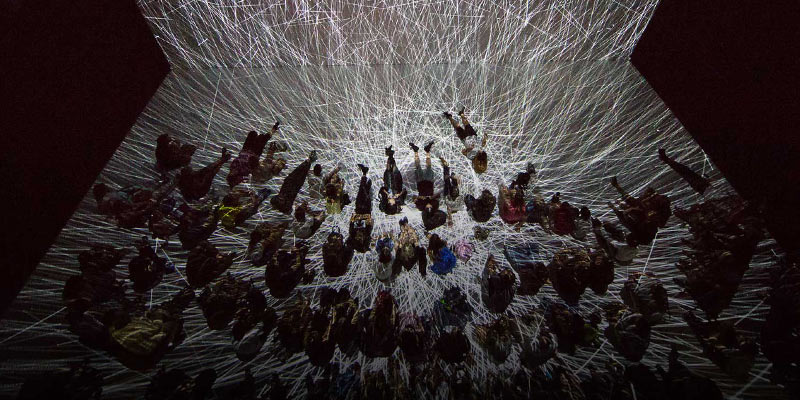Gwangyang – Linz Media Arts Exchange
October 2 – 10, 2024
Yedam Warehouse, Gwangyang Art Warehouse Media Center,
Banchanggo Inseri Park, An Academic Forest Office of Seoul National University
In an exciting first-time collaboration, the city of Gwangyang partners with Ars Electronica to bridge two artistic-technological worlds separated by 8,637 kilometers. The exhibition, spread over 4 venues, showcases renowned media artists from both South Korea and Austria, working at the intersection of art and technology. Susi Gutsche’s critical installation Tracewaste will be shown alongside six distinctive South Korean artistic positions by Changkyum Kim, Lee Nam Lee, Donah Lee, Jeongju Jeong, Jaehyung Lee and Joon Yong Moon. In addition to this, Ars Electronica presents its outstanding selection of animations from Prix Ars Electronica 2023.
In an engaging panel discussion on October 9 at The Auditorium of the Jeonnam Museum of Art, artist Susi Gutsche together with Dae Hyung Lee, Gwang-hoon Kim, Jin-seok Seo, Jiho Lee, Jong-ok Baek, Young-hoon Na, Hong-ju Shin, In-ho Cho, Heo-kyung Kim share insights into their works and creative processes.
Gwangyang and Linz have been partner media cities since 1991, a relationship strengthened through collaborations between POSCO and Linz’s Voest Alpine.
Ars Electronica presents
Susi Gutsche (AT)
TRACEWASTE

Yedam Warehouse, 32, Eupseong 1-gil, Gwangyang-eup, Gwangyang-si, Jeollanam-do, Republic of Korea
October 2 – 10, 10:00 – 20:00
TRACEWASTE observes and visualizes garbage movements from a citizen’s perspective to explore future urban life in the context of waste management. It tracks discarded objects using geolocation methods, providing insights into waste whereabouts, transport durations, distances, and emissions. IoT devices (0G) in a low power wide area network track various types of waste across Italy, with a special focus on textiles and plastics. Monitoring rubbish collection vehicles within Rome additionally captures urban waste collection dynamics. The interactive audio-visual installation, resembling an island of waste, challenges waste disposal culture, triggering discussion on global waste challenges. An interactive interface visualizes garbage routes, allowing hands-on exploration through a touch screen. The soundscape incorporates electromagnetic emissions from tracking devices and recordings of rubbish trucks, and urban waste sounds. The non-linear interaction between installation and viewers creates a unique experience. We are living in the era of trash, what will the future look like?
Biography:
Susi Gutsche (AT) is a research-driven artist with a background in Social Design — Arts as Urban Innovation, the humanities and scientific laboratory work. She participated in archaeological excavations and worked in clinical research settings. In her works, she is primarily interested in the intersection of art and everyday life, routines and their aesthetics, addressing societal and environmental processes in urban contexts. Through an experimental approach, she engages with multiple media, combining video, photography, participative actions, and unconventional materials/technologies.
Website: www.tracewaste.eu
Artwork Credits:
Assistance/Design: Dimitrije Andrijević
Sound Design: Sebastian Scholz, Coding: Max Pellert
Technology partnership: Paul Pinault
Supported by SONY CSL: Vittorio Loreto, Alessandro Londei, Bernardo Monechi, Matteo Bruno in the framework of the artist residency "Big Data and the City"
The project has received funding in the framework of the European S+T+ARTS initiative, project “Repairing the Present” from the European Commission’s Directorate-General for Communications Networks, Content and Technology under grant agreement LC01641664 and was co-hosted by SONY Computer Science Laboratories.
ARS ELECTRONICA ANIMATION FESTIVAL ON TOUR

Yedam Warehouse, 32, Eupseong 1-gil, Gwangyang-eup, Gwangyang-si, Jeollanam-do, Republic of Korea
October 2 – 10, daily screenings
10:00 Electronic Theatre | 14:00 AI & Human | 15:00 Austrian Panorama | 16:00 Electronic Theatre
Ars Electronica Animation Festival On Tour in Gwangyang presents a curated selection of three screening programs and fourteen groundbreaking animated works from Prix Ars Electronica 2023. This diverse selection invites new ways of thinking about how we experience the digital-virtual-real world we live in. A broad spectrum of styles and techniques – AI-generated images, cinematic deepfakes, hybrids between games and animations, animated documentaries and experimental-abstract works – highlight emerging trends in the field of animation and give witness to the diversity of the medium.
Electronic Theatre is the annual best-of program, a compilation of five outstanding animations chosen by the Prix jury from the submitted works in the “New Animation Art” category. Combining fantasy, erotica and body horror, IT’S DANGEROUS TO GO ALONE! TAKE THIS follows an ambiguous hero undergoing numerous metamorphoses beyond conventional masculinities of game avatars. In Delivery Dancer’s Sphere, another hero, a female platform delivery driver, rushes with the speed of light through a labyrinth of endless paths, sliding into a parallel time and space. GLITCHBODIES uses video game aesthetics to introduce us to a mesmerizing group of characters with diverse bodies and minds. Lebensraum addresses contemporary problems such as overpopulation, the destruction of our living space and the steady rise in sea levels with a humorous approach. Similarly, FuneralPlay speculates on a future in which users can choose between erasing their electronic footprint after death or uploading it to virtual heaven, published on blockchain.
AI & Human. Who Owns the Truth? approaches topical disputes of our time, from data ownership and ethics of data harvesting, to authorship in the age of AI, love in time of crypto, deepfakes and image credibility. Using computer vision and machine learning, Soft Evidence is a series of filmic deepfakes created in classic cinema style. Decoding Bias imagines a therapy for AIs helping them to emancipate themselves from discriminatory algorithms. LoveCounter invites users to an “emotional autonomous region” where they can escape from the omnipresence of big data and manage their own digital footprints. The bizarre images from Planets and Robots are entirely generated by AI, yet animated by humans, showing what it amounts to when humans and AIs are equal partners in the creative process.
Austrian Panorama highlights recent animation works of local artists. Cave Painting, Not Really Now Not Anymore and The Great Tree Piece offer a meditative-poetic glimpse at more than human worlds, in which the organic and the digital are inseparably intertwined. Nature is neither pure, nor standing as a graspable whole in front of our gaze. It is rather fragmented and densely filled with infinitesimal details which reach beyond human perception. Animation becomes a tool for staging different perceptual calibrations, zooming between different proximities exceeding the human gaze, and redefining notions of physicality and abstraction, natural and synthetic. Internet Gaga and Shroomsday complement the selection with a humorous and ironic take on our contemporary times.
Credits:
The Ars Electronica Animation Festival ON TOUR is organized by Ars Electronica in cooperation with the Austrian Federal Ministry for European and International Affairs.
Website: ars.electronica.art/export/de/animationfestival2023
South-Korean artist positions:
Joon Yong Moon (KR)
HELLO, SHADOW!

Part of Joon Yong Moon’s AUGMENTED SHADOW series initiated in 2010, HELLO, SHADOW! offers the public an immersive experience that implements augmented reality using shadows. Virtual shadows are superimposed onto real objects’ actual shadows. The project explores the nature of shadows existing at the boundary between imagination and reality.
Biography:
Joon Yong Moon (Korea, b.1982), aka Joon Moon, is a South Korean new media artist. He is working on experimental media and computational art such as augmented reality, tangible interface, generative art, and sound visualization. His works were exhibited at MOMA(New York), Ars Electronica, Microwave, Onedotzero, FILE, Cinekid, and Scopitone, and major museums of Korea such as National Museum of Modern and Contemporary Art, Seoul Museum of Art, Kumho Museum, and National Asian Culture Center. His Augmented Shadow series has garnered the STARTS Prize Nomination, an Excellence Award from the Japan Media Arts Festival, and official selections from international XR film festivals such as Kaohsiung, Sandbox (China), and Bucheon.
Website: joonmoon.net/Hello-Shadow
Lee Nam Lee (KR)
Waterfall Turned into a Poem

By arranging over 5,300 volumes of books—ranging from ancient oracle bone scripts to modern texts—into an organic structure symbolizing the foundation of human history, the artist aims to depict the enduring transmission of civilization and spirit across time. The waterfall of ancient characters, interwoven with a chronological flow of philosophical and literary knowledge, represents the continuity of ideas and wisdom from antiquity to the present day. For individuals today, immersed in a sea of images and digital information, the artists seeks to evoke contemplation on the intangible essence and values embedded in human history. The cascading flow of text serves as a reminder of the unseen forces that shape our culture. As part of this exploration, the artist collaborated with the GFLAS Life Sciences Team at Seoul National University to extract DNA data from my hair. The genetic sequence was digitally processed and presented across both video and print media, further intertwining personal identity with the broader historical and cultural narrative.
Biography:
Born in Damyang of Jeonnam province, Lee Lee Nam graduated from Chosun University in Korea with an undergraduate degree in sculpture and a doctorate degree in Fine Arts. In his digital reinterpretation of classical masterpieces that reveal nature’s wonders and life’s aura, he attempts to breathe new meaning and vitality into each pixel of image. At the 2016 Busan Biennale, he was the first Korean artist to present a virtual reality artwork using Google’s Tilth Brush technology. In 2019 he was part of group exhibition at Tate Modern. His works are included in numerous prominent museums such as the Asian Art Museum of San Francisco, the Suning Art Museum and the Zebrastraat Museum in Belgium.
Website: www.leeleenam.net
Jeongju Jeong
Luminous City

The Seoul National University Southern Practice Forest residence, built in 1919 as an employee residence during the Japanese colonial period, is a nationally registered cultural heritage site that reflects the spatial composition of Japanese housing from that era. A structure featuring monitors alongside mirrors and stainless steel plates is installed within the residence. The monitors display videos of the Southern Practice Forest, the exhibition space, and urban architecture in Gwangyang, blending shifting colors and historical events. The imagery evokes a simplified building form, reflected in the mirrors and metal surfaces, creating a dynamic interplay. Titled Luminous City, this work combines the LED visuals with the metallic framework, revealing a complex presence within the room that echoes over a century of history, inviting contemplation of cultural memory and the passage of time.
Biography:
Jeongju Jeong was born in Gwangju in 1970, graduated from the Department of Sculpture at Hongik University and received a Meisterschuler degree from Professor Hubert Kiehl at the Kunstakademie Düsseldorf in Germany. He is currently a professor at the Department of Sculpture at Sungshin Women’s University in Seoul. He presents various forms of installation work inspired by architectural spaces, as well as sculptural installation works that subvert the power of gaze. Since 2002, he has held 15 solo exhibitions in Seoul, Japan, China, Belgium and others, and participated in numerous domestic and international group exhibitions, including The Future is Now (National Museum of Modern and Contemporary Art, Gwacheon) and Thermocline of Art (ZKM, Germany).
Website: www.jjju.com
Donah Lee
L’espérance

This video artwork offers a digital reinterpretation of a traditional cultural heritage object—an ancestral folding screen—reimagined as contemporary art. Originally gifted to the artist by his father in 1991, the screen features traditional calligraphy and East Asian cultural motifs, representing the love, identity, and legacy passed down through generations of the family’s diaspora. Through digital media, the folding screen transcends its status as a historical artifact, becoming a spiritual heirloom that remains alive and relevant today. In the video’s final scene, vibrant flowers symbolizing happiness bloom, reflecting the enduring vitality of this cultural heritage, sustained by the father’s love and life. This work bridges the gap between tradition and modernity, blending personal experience with universal emotions. It seeks to generate new meanings by reinterpreting cultural heritage through a contemporary lens.
Biography:
The artist’s works summon both the ‘real world’ and the ‘imaginary world’ through images that carry long histories and diverse narratives, appealing to ‘imagination’ based on history and fact. Through this, the artist seeks to remind us of the value of what has existed and the value of our current existence as we move toward the future. Her works express the Odyssey toward an ideal that all beings pursue, through a fusion of painting, lenticular art, video art, and sculpture.
Jaehyung Lee
Machine impromptu & Face of City_Seoul

Machine Impromptu explores new possibilities in AI art, demonstrating how nature, humans, and machines can harmonize to create a unique form of artistic expression. The limitations of AI-generated music, often composed through random functions within structured algorithms, highlight its lack of spontaneous artistic inspiration. In response, this artwork seeks to transcend that constraint by incorporating the randomness of nature. A fish tank, with a ‘staff’ drawn across it and fish acting as the ‘notes,’ is scanned at a steady pace to create music that evolves in real-time as the fish move through the water. The position of each fish determines the musical scale, which is played automatically on a piano, while the accompanying chords are generated by an AI system.

Face of City is a project that delves into the emotional landscape of a city, capturing the collective sentiment of its inhabitants. By analyzing a vast array of social media posts from a specific region, the project uncovers the emotional undercurrents that define the city’s atmosphere. These insights are visualized through a dynamic facial representation, with expressions that shift in real-time, reflecting the changing emotions of the population. In this piece, the emotional states of different demographic groups—men, women, the elderly, and the youth in Seoul—are conveyed through their corresponding facial expressions, which are derived from social media data specific to the Seoul area.
Biography:
Jaehyung Lee is a Seoul-based artist known for his material and sculptural experiments rooted in immaterial information. He had projects focusing on light, information, and interfaces. Subsequently, he expanded LED matrix structures into sculptural forms through his Bending Matrix series, collaborating on exhibitions and projects with various corporations. Using AI, he has developed projects involving emotional data and sound in urban areas. Lee has been implementing media art projects in diverse public spaces such as cities, museums, and airports in the form of public art.
Websites: www.leejaehyung.com/11698434-face-of-city, www.leejaehyung.com/machine-impromptu
Changkyum Kim
Watershadow & Flowers

A video camera captured the reflection of a person on water, and through careful editing, the artist transformed the footage to mimic real water when projected onto a dish. What appears to be water is, in fact, a virtual illusion. As one peers into this virtual surface, one might encounter a person’s image, while shadows occasionally emerge, altering the experience. In everyday life, shadows cannot exist independently; they are bound to the objects that cast them. In this artwork however, the shadow appears real, yet its source is absent—it’s the shadow of a person who is not there. The work blurs the line between reality and illusion. It seems tangible, but at moments, reveals itself as an artifice. When the video ends, the dish is revealed as a simple white object, stripped of its illusion.
Biography:
Kim Changgkyum graduated from Sejong University with a major in painting and fromCarrara Academy in Italy with a major in sculpture. He began to work with video in 1997. He is currently serving as the senior vice president of the Korea Visual Arts Copyright Association and the chairman of the Korea Media Art Association.
He performed so far in 27 solo exhibitions and 300 group shows.
Exhibition team
Woosong Bang – Head of overseas cultural trade support at Gwangyang Culture City Center, Professor of Yewon Arts University
Laura Welzenbach – Head of Export, Ars Electronica
Daniela Duca De Tey – Exhibition Producer Ars Electronica Export and co-curator Ars Electronica Animation Festival



